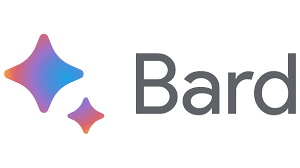The “Google Bard logo” might look simple at first glance. But let me tell you, there’s an ocean of meaning swirling inside that design. Today, we’re cracking open the safe, lifting the velvet curtain, and peeking behind the scenes of one of Google’s most fascinating brand moves yet.

Get ready. Because once you see it, you can’t unsee it.
Table of Contents
ToggleOrigins of the Google Bard Logo: Where Genius Meets Simplicity
Before we dunk ourselves into design theory, let’s get some background.
- Launch Date: The Google Bard AI launched in early 2023.
- Mission: Compete with OpenAI’s ChatGPT, redefine AI interaction.
- Logo Goal: Capture creativity, intelligence, and speed—without looking like a soulless tech bro.
The “google bard logo” had to be simple, brilliant, and inviting. And yes, those three words are harder to blend than you’d think.
What Makes the Google Bard Logo Tick? (And Why You Subconsciously Love It)
Let’s break it down like an old-school mixtape:
- Font: Clean, rounded edges. It’s speaking friendly and accessible.
- Color Palette: Soft gradients hint at imagination and movement.
- Symbolism: It’s abstract—but not confusing. You feel creativity even if you don’t “get it” immediately.
Colors: Google Played Chess, Not Checkers
The Bard logo uses a multi-tone blend. It’s not rainbow chaos—it’s strategic.
Here’s the cheat sheet:
- Blue: Intelligence.
- Yellow: Optimism.
- Red: Passion.
- Green: Growth.
You might not notice it at first, but your brain does. (Sneaky, right?)
Evolution of AI Branding: Why Google Had To Nail This (Or Get Roasted)
Serious moment here:
Google wasn’t just designing a logo. They were designing trust.
If the “google bard logo” flopped, Bard would have flopped. Period.
Compare the Competition: OpenAI vs Google Bard
- ChatGPT: Green dots. Feels clinical.
- Google Bard: Vibrant flow. Feels alive.
When you’re asking AI to help write your wedding vows or draft your novel? You don’t want it feeling like a tax form.
You want magic.
That’s what the Bard branding delivers—subtle magic.
Logo Psychology 101: The Secrets Behind Google’s Design
Humans are weird. (Yeah, I said it.)
We feel logos way before we think about them.
Here’s what Google’s Bard logo pulls off, Jedi-style:
- Curves: Inviting and soft.
- Movement: Implies progress and creativity.
- Minimalism: Forces focus on the user experience, not the tech.
[Visual Depth] The Logo Isn’t Flat—And Neither Is Your Brain
The gradient effect in the Google Bard logo triggers a “this is moving” sensation.
Translation?
You subconsciously believe Bard is evolving and growing… just like you.
Slick, right?
Google Bard Logo Meaning: More Than Meets the Eye
Time for a spicy hot take.
[Color Symbolism Deep Dive]
- Blue foundation suggests logic and calm thought.
- Yellow accents imply creativity bursts.
- Red undertones show drive and ambition.
- Green highlights hint at constant growth.
Google is whispering: “This AI is your friendly brain buddy, not a cold machine.”
You didn’t even know you heard that, but you did.
How the Google Bard Logo Reinforces User Trust
[Subtlety in Branding: The Psychological Masterstroke]
Google wasn’t just flexing graphic design muscles.
They needed you to TRUST Bard.
The Three Trust Triggers in the Logo
- Familiar colors: Pull from Google’s brand DNA.
- Friendly shapes: Soften fear of “scary AI”.
- Fluidity: Implies adaptiveness and user-focus.
Bottom line: The logo acts like a nonverbal handshake.
“Hey. Relax. I’m here to help.”
What Designers Say About the Google Bard Logo (Spoiler: They’re Jealous)
[Top Critiques and Praise]
When Bard launched, design nerds went crazy.
Here’s the real tea:
- Minimalists: Loved the simplicity.
- Color theorists: Applauded the gradient mastery.
- Brand purists: Cried tears of joy at the consistency with Google’s core identity.
The logo wasn’t just “good enough.” It was strategically excellent.
A lot of other brands took notes.
If You’re Rebranding: Lessons From the Google Bard Logo
Alright, now I’m getting serious again.
If you’re building anything—a blog, a brand, a business—study the “google bard logo” playbook.
Key takeaways:
- Keep it simple. (Complexity kills trust.)
- Use color with purpose. (Random = weak.)
- Think feeling first, looks second. (Humans “feel” before they “analyze.”)
You don’t need a billion-dollar design team.
You need to understand people.
Google Bard Logo FAQs (Because You Were Probably Thinking These Anyway)
[FAQ: Is the Bard Logo Open Source?]
Nope. Full copyright, baby.
You can admire it. You can write about it. But don’t swipe it.
[FAQ: Why No Mascot or Icon?]
Because sometimes less is more.
A mascot would’ve cheapened the serious “AI but friendly” vibe.
[FAQ: Will the Logo Change Over Time?]
Maybe.
Brands evolve. Google might tweak it down the line.
But the core feeling? Bet money it stays the same.
Why the Google Bard Logo Will Be Studied for Years

Bold prediction alert:
Marketing textbooks will break down the Bard logo the way they do Nike’s swoosh and Apple’s bitten apple.
It’s that good.
- Emotionally sticky.
- Visually clean.
- Strategically brilliant.
Google knew exactly what they were doing.
And now—so do you.
Mic drop.
How’s that about the Google Bard Logo?
